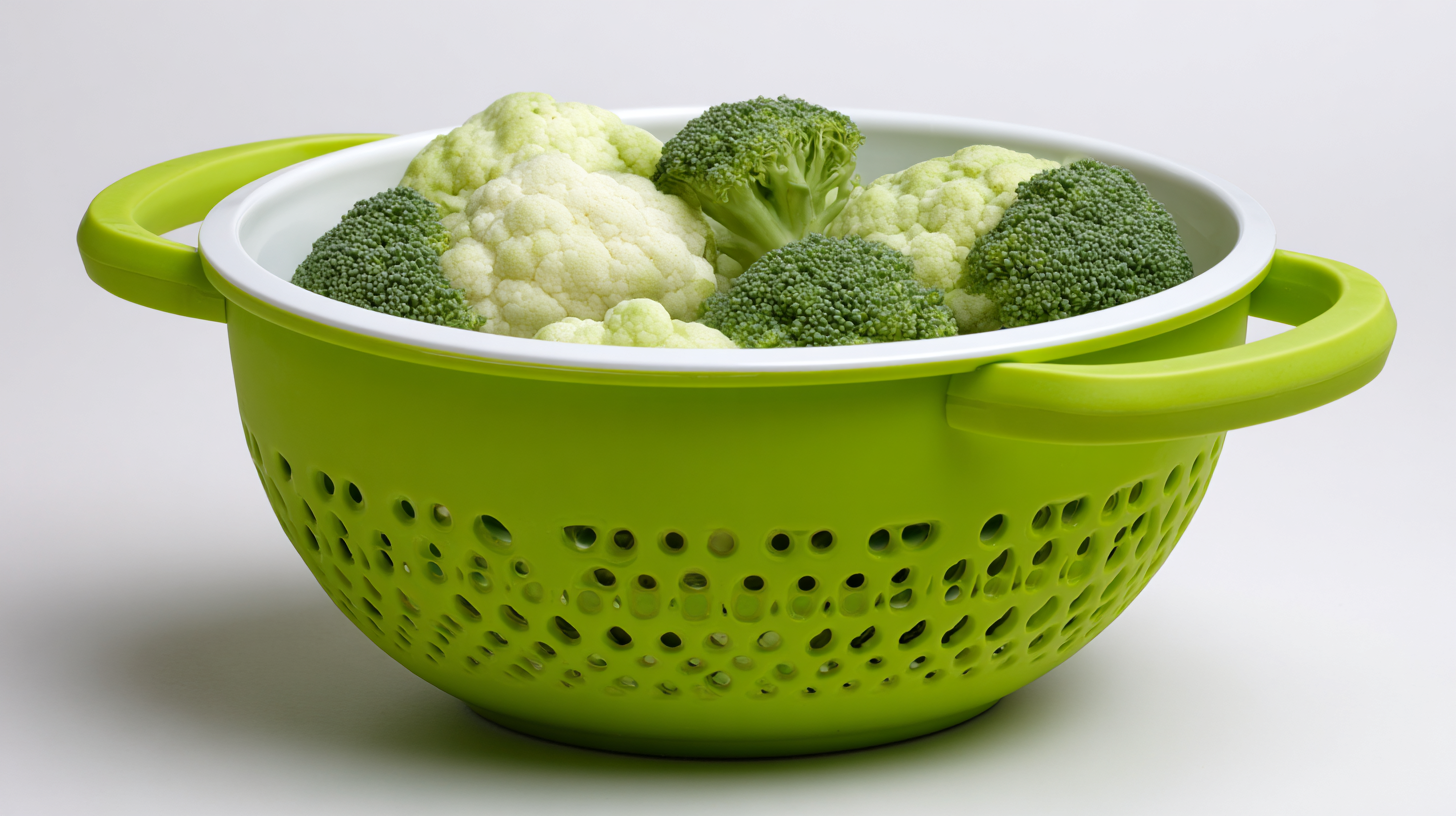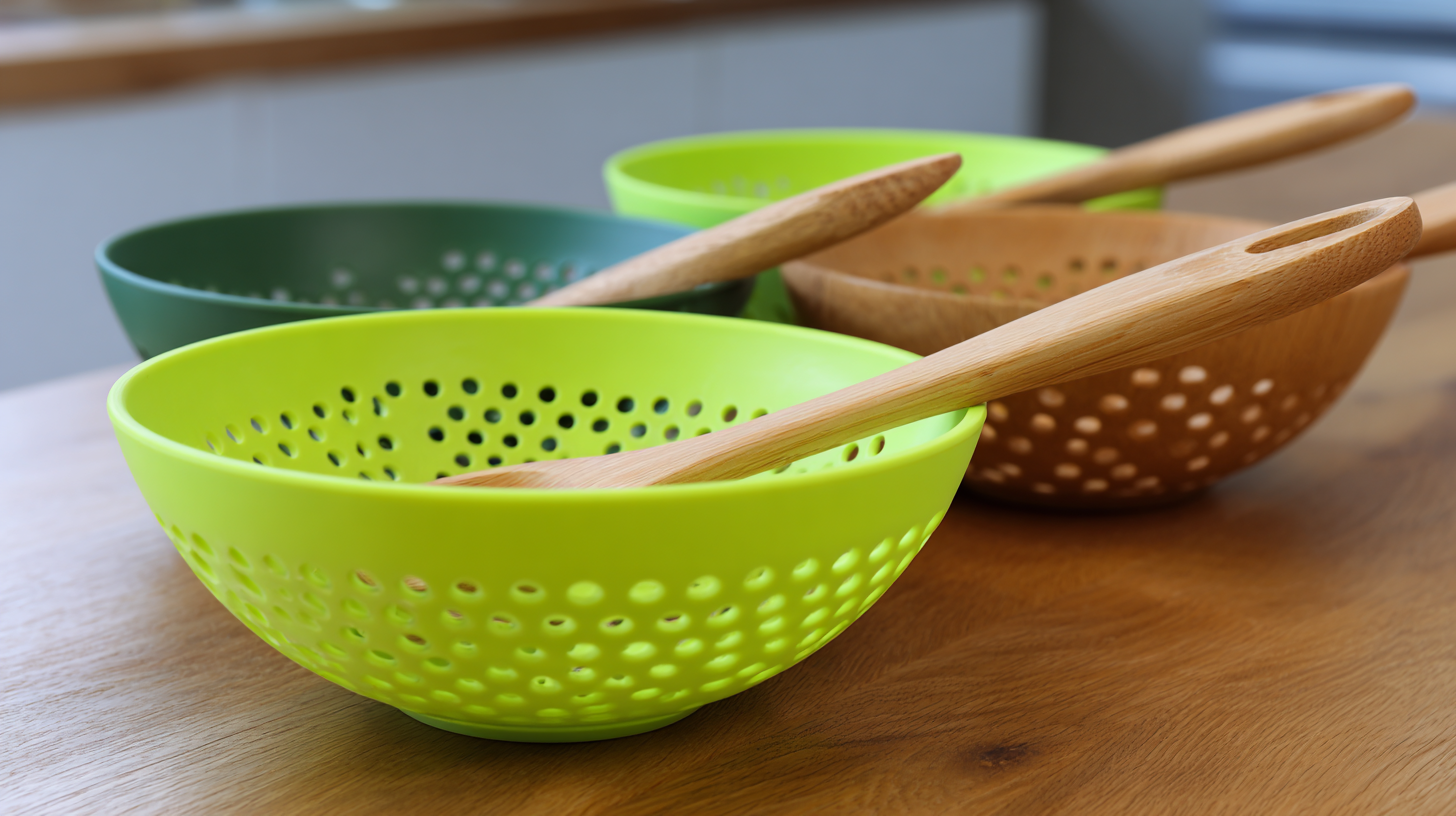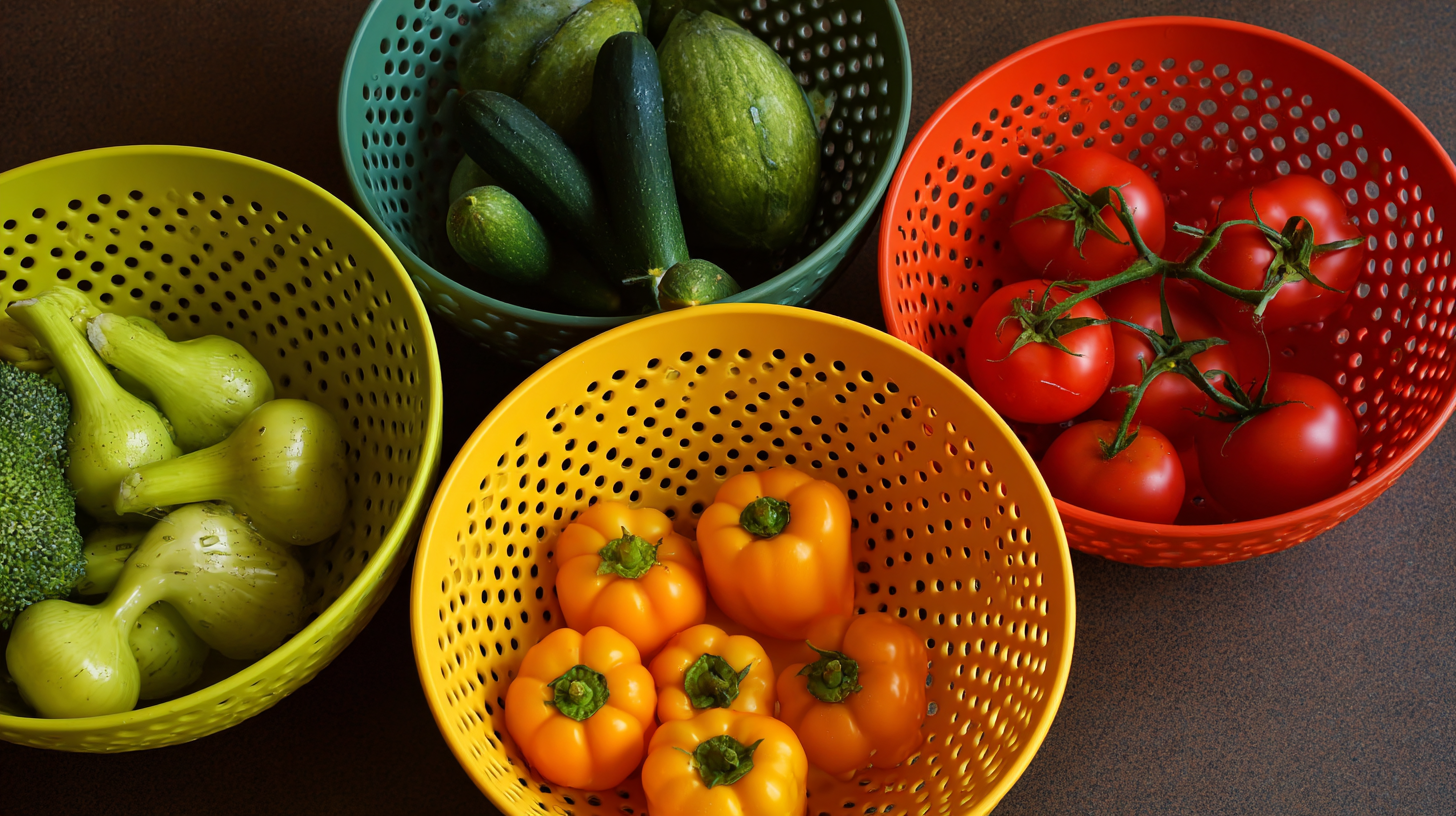Welcome to this website!

As the culinary landscape evolves, innovations in kitchenware play a pivotal role in enhancing cooking experiences. Among these innovations, silicone colanders have emerged as a standout tool that meets the demands of modern chefs and home cooks alike. According to a report by Grand View Research, the global kitchenware market is expected to reach $23.78 billion by 2025, with the growing popularity of innovative materials like silicone driving this growth. Silicone colanders, known for their flexibility, durability, and heat resistance, not only facilitate easier food preparation but also contribute to a more efficient kitchen environment. In an era where convenience and performance are paramount, understanding how best to utilize silicone colanders will empower culinary enthusiasts to maximize their cooking potential and embrace the future of kitchen innovations.

In recent years, the kitchenware industry has experienced a remarkable shift towards innovative materials, particularly silicone. The evolution of silicone kitchenware has not only transformed how we prepare and serve food, but it has also enhanced our overall culinary experience. By 2025, the global high consistency rubber (HCR) silicone market is projected to reach an impressive $520.93 million, with an anticipated growth to $766.5 million by 2033, reflecting the rising popularity and versatility of silicone products.

Silicone colanders exemplify these advancements, offering superior durability and functionality compared to traditional metal or plastic options. Their flexible structure allows for easy handling and storage, while heat resistance and non-stick properties make them ideal for a variety of cooking tasks. When using silicone colanders, remember to avoid sharp objects to maintain their integrity and always hand wash them to prolong their life.
As culinary enthusiasts continue to explore silicone innovations, it's essential to keep an eye on both practicality and design. Opt for colanders in vibrant colors to brighten your kitchen and make cooking an enjoyable experience. Additionally, consider investing in oversized colanders to efficiently handle larger meals, ensuring you get the most out of your kitchenware in the years ahead.
The evolution of kitchenware has reached new heights with the introduction of innovative silicone colanders that significantly enhance cooking experiences. Industry reports show that the market for silicone kitchen tools is projected to grow steadily, with an expected CAGR of 6% by 2025. The flexibility, lightweight nature, and heat resistance of silicone makes these colanders not only practical but incredibly versatile for various culinary tasks. For instance, unlike traditional colanders, silicone versions can easily collapse for storage and can withstand temperatures ranging from -40°F to 450°F, which broadens their usability beyond just draining pasta or washing vegetables.
Key features of silicone colanders include their non-stick surface, which minimizes food waste while preventing buildup of odors and stains. According to a survey by the Culinary Institute, 78% of chefs reported a preference for silicone kitchen tools due to their durability and easy cleaning. Furthermore, the non-slip design of modern silicone colanders provides stability while in use, enhancing safety during meal preparation. As we look beyond 2025, these unique characteristics will likely continue to revolutionize the way home cooks and professional chefs alike approach cooking and food preparation, making silicone colanders an essential tool in any kitchen.
When it comes to kitchenware, colanders have long played an essential role in draining liquids from food. Traditionally made from stainless steel or plastic, these utensils are practical but can fall short in terms of functionality and safety. Enter silicone colanders, which provide an innovative twist on the conventional design. With their flexible and durable nature, they are not only lightweight but also incredibly versatile, catering to various cooking needs without the risk of rust or injury from sharp edges.
Silicone colanders come with a plethora of advantages. They withstand high temperatures, making them suitable for draining hot pasta or rinsing vegetables under hot water. Additionally, their non-slip base ensures stability during use, and their collapsible design allows for easy storage, saving valuable kitchen space. However, traditional colanders still have their merits, particularly with their sturdiness and aesthetic appeal. Despite this, the growing trends towards health-conscious cooking and minimalistic kitchen designs suggest that silicone colanders are likely to become increasingly favored by culinary enthusiasts looking for both convenience and functionality beyond 2025.
As the culinary world shifts towards more sustainable practices, silicone colanders present a remarkable solution that aligns with eco-friendly values. Traditional kitchen tools often contribute to significant waste and environmental degradation, either through the materials used or from being quickly discarded after use. In contrast, silicone colanders are not only durable and long-lasting, but they also minimize the environmental impact by reducing the need for frequent replacements. Made from high-quality, food-grade silicone, these colanders can withstand high temperatures, are resistant to staining, and can easily last for years, thus keeping more plastic and metal out of landfills.
Additionally, silicone colanders contribute to a more efficient kitchen by simplifying the food preparation process. Their flexibility allows for easy handling and storage, making them ideal for both small and large kitchens. When not in use, they can be collapsed or stored flat, saving valuable space. Moreover, because silicone is non-porous and easy to clean, they are less likely to harbor bacteria, ensuring a safer cooking experience. By choosing silicone colanders, consumers not only enhance their culinary experience but also actively participate in reducing waste and promoting a sustainable future in kitchenware.
As we look toward the future of kitchenware innovations, the integration of smart technology into culinary tools is poised to revolutionize the cooking experience. Reports indicate that the kitchen tools market is expected to grow significantly, with a projected value of $3.04 billion by 2025, further increasing to $4.16 billion by 2033 at a compound annual growth rate of 4.0%. This growth is driven by the rising demand for user-friendly, efficient tools that integrate seamlessly into smart home ecosystems.

Among the trends shaping this future is the enhanced functionality of kitchenware, such as silicone colanders equipped with smart features that could monitor food quantity, cooking time, and even nutritional content. These innovations not only elevate culinary experiences but also address the modern consumer's interest in healthier eating habits. Additionally, the glass cookware market is forecasted to reach a value of $709.27 million by 2032, suggesting a growing preference for materials that are both aesthetically pleasing and functional.
The future of kitchenware promises to be exciting, making cooking more accessible and enjoyable for everyone.
